What connects the mysterious hairy man of the Australian bush, the Japanese author Haruki Murakami, and a struggling donkey just trying to get by in the big city?
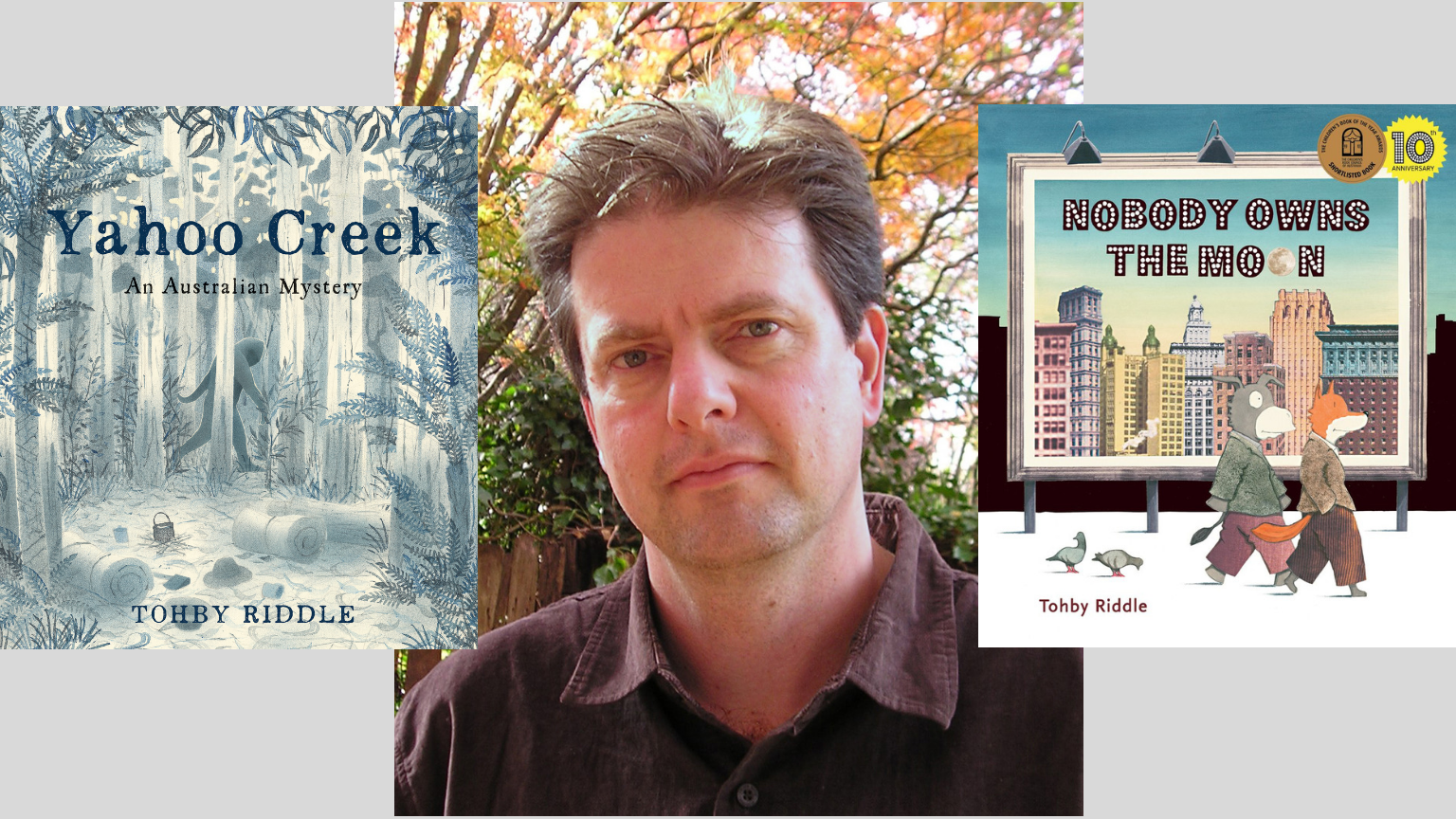
I loved Tohby Riddle’s 2009 picture book Nobody Owns the Moon from the first page. ‘The fox,’ it observes drily, ‘is one of the only wild creatures in the world that can successfully make a life for itself in cities’, and the corresponding illustration shows one particular fox, Clive Prendergast (‘his real name can only be pronounced by foxes’), relaxing in a comfortable chair with his feet up, a cityscape out the window, a Van Gogh print on the wall and a stack of books beside him. This opening is Riddle’s books in microcosm; a gift for the unexpected, a depth of feeling for character, and a playful art style with references for the observant. I talked to him on the eve of publication of his latest book, Yahoo Creek.
Miriam: What do you like best about creating books for children?
Tohby: It’s a two-fold answer for me, because you do have your audience, but it’s a personal thing as well – the pleasure in creating art and writing. For me, first and foremost I love ideas, and then I like to try and capture those in words and pictures, and my ideas tend to suit children’s literature and the formats children’s books are published in. The picture book especially.
When I pursue the idea I tap into a strong feeling, which might also be a childhood memory, remembering what it felt like to see the world from a child’s point of view. Towards the end of the process I’m mindful of the fact that it will have largely a child audience, and so I make sure that no matter the idea it’s presented so simply that a child can understand it. As well as adults – hopefully anyone reading it connects with it somehow.
M: You have a wide range of skills to draw on – illustration, writing, collage, design. Does each idea come with its own format?
T: Because I’ve also worked as a cartoonist I’ve trained my mind to wander and make unusual connections between things. I keep a notebook and I scribble things down, and every now and then something in particular has a kind of thrill, and you go oh, what’s that about. So from that I start exploring. I never know where it’s going to lead; I need to write the story to find out about that idea and what’s going to happen, and then it tends to sort of unfurl and I end up with the basic manuscript.
The better you get to know the idea the better you get to know how to present it, and I find each idea has its own needs in terms of how you express it. It might be a different narrative voice or an art style that just seems to suit that content. Design and layout and all those things. You hope that every part of the book has the DNA of the idea in it.
The better you get to know the idea the better you get to know how to present it, and I find each idea has its own needs in terms of how you express it.
M: So it’s a process of discovery?
T: I think that’s the excitement of it in a way, that something’s seemingly constructed out of nothing. One moment you don’t have a book idea and the next minute there’s this story, and it seems to have real characters in it, who think and do things that surprise you as well. That’s a really great part of the process and I think it’s the one that keeps me coming up with new books because it’s a real thrill when that happens; when something comes alive.
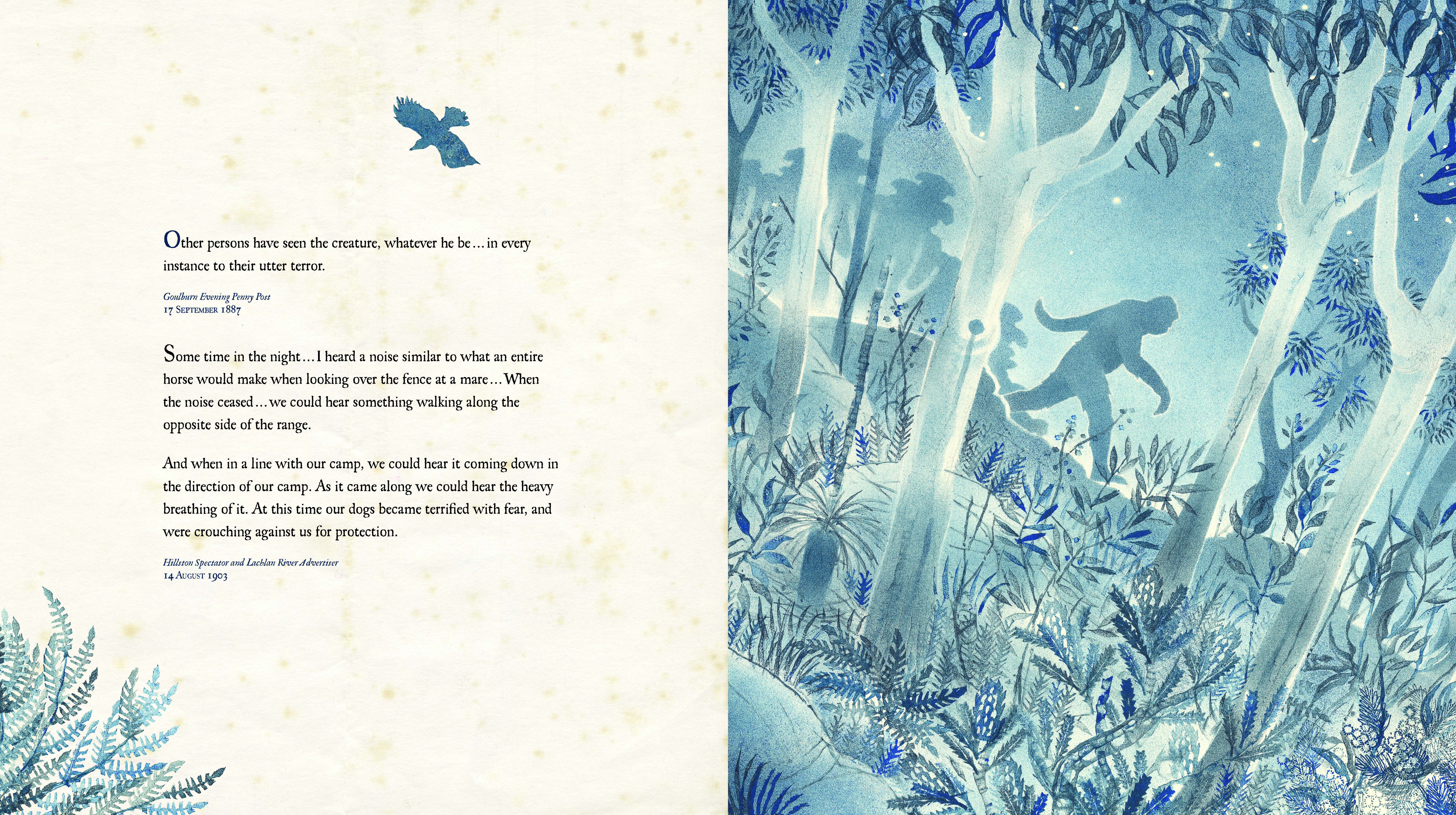
M: There are often what I can only describe as Easter eggs in your books, such as the Portland Vase being juggled (unsuccessfully) by My Uncle’s Donkey and the call-backs to classic images such as Edward Hopper’s Nighthawks painting in The Great Escape from City Zoo. Do you plan these, or do you seize on inspiration?
T: They crop up. The Great Escape from City Zoo was called a post-modern picture book because it was appropriating other images from popular culture, but I wasn’t thinking in that way. I think what happened there was because I went to art school and studied fine art, I look at lots of art and notice things in movies. And when you start constructing images you start to realise that there are precedents for those images.
In The Great Escape from City Zoo especially it seemed like a classic old black and white movie, and all those images I drew upon gave it that feel. I had fun with that and it can extend the reader’s experience when they find out more about what’s going on in the image and it leads them to other art.
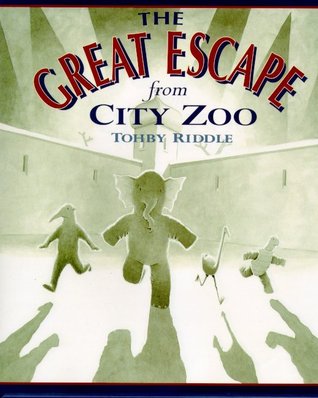
M: You’ve written a number of books set in cities, but your latest, Yahoo Creek, is set in the bush – very specifically, the Great Dividing Range of Australia. Was it hard to make that shift?
T: It was actually a joy to do that. Until the age of thirteen, before our family moved into Sydney, I’d grown up on the edge of a large national park bushland and so the bush was a big part of my childhood. I was the youngest and had two much older sisters and I spent a lot of time just roaming around the bushland – little caves and creeks and mangrove swamps and that sort of thing. More recently I’ve moved up to the Blue Mountains just out of Sydney, which is surrounded by vast areas of bush and I’ve been reconnecting with the bush again.
Yahoo Creek is partly a long overdue response to having grown up in the bush: it’s a tribute to the Australian landscape.
M: Could you talk about the process of making Yahoo Creek and your collaboration with Peter Williams [a Ngiyampaa Elder]. How did it all come about?
T: It started when I moved to the Blue Mountains and started hearing stories of hairy man encounters in the bushlands around the Blue Mountains and then beyond, up and down the Great Dividing Range. Something about them seemed possibly meaningful, a way of engaging with the landscape. I began researching more and more and then I found that the National Library of Australia has an online database where you can go through digitised early newspapers going back to the beginning of the colony. So I spent a lot of time searching those and finding all these colonial newspaper reports that were also of encounters with large hairy hominid creatures. I found so many of them, close to a hundred articles so far, and I was really interested in the stories amid all these reports and also the voice of the reporters, and I started to think you could construct a narrative by carefully arranging extracts from these, and build up a picture of what was possibly happening.
I got to that point and then I was also aware that Aboriginal people have beliefs about the hairy man as well, which I think made it even more interesting because Aboriginal people and European settlers were both independently experiencing this strange phenomenon. And that’s where my publisher said, maybe we need to consult someone senior or with authority who might be able to offer a perspective on what we’re doing.
I was also aware that Aboriginal people have beliefs about the hairy man as well, which I think made it even more interesting because Aboriginal people and European settlers were both independently experiencing this strange phenomenon.
I’d met Uncle Pete by chance – a friend of mine knew of him – and he was very keen to meet up and share knowledge. He was based in the Blue Mountains too, so we met up and we had a long chat and I wrote down a lot of notes. As I was writing up the notes I found them really interesting as an extra voice alongside all the colonial voices and so almost in a playful way I thought what would it be like if I placed his words at certain points in the narrative, so I tried that and it seemed to do something quite meaningful. I think because here’s this history, and then here’s someone saying what that mystery is, is this. He was very matter-of-fact about what was going on and it wasn’t news to him at all.
So I showed the publisher and she said, wow, that’s really interesting. I then showed it to Uncle Pete and he really liked it too. The Aboriginal point of view is as varied as there are over a thousand tribes of Aboriginal people and you can’t say this is the Aboriginal point of view, but certainly in his case he was interested in sharing knowledge. He has a feeling that it’s important to share knowledge or else no-one will know it outside of a few people, so that was his attitude to those words being in print. He really liked what it was doing in the book and was very happy for it to be used that way. As it got closer to final draft I just kept showing it to him to make sure he was happy with it and right before it went to print, I showed it to him again and he made a few last minute changes.
…it’s important to share knowledge or else no-one will know it outside of a few people…
M: You end the book with his statement about these stories being not mine or yours, but ours.
T: His attitude was that these stories need to be shared and that they’re all our stories and that idea that anyone born in Australia (he says) is born to the lore of this land. Which is very powerful because it’s saying not just that they are your stories but it comes with a responsibility too, because the lore is about looking after the land. So it’s a command as well. He’s a wise fellow, Peter Williams.
M: It sounds like a really powerful experience.
T: It was quite a journey putting that book together. It’s interesting how the experience of making some books can be transforming. We’ve kept in touch, and we still meet for coffee and have a chat about a few things. He invited me to a big corroboree up in the bush late last year, which was terrific.
It was quite a journey putting that book together. It’s interesting how the experience of making some books can be transforming.
M: One theme that crops up in many of your books, especially Nobody Owns the Moon and Milo, is friendship, and how this relationship can be tested. Is that something you’re particularly interested in?
T: I guess I must be! If I were to psychoanalyse myself it would appear that friendship, and how friendships form and how they play out is a preoccupation or an interest. Certainly in the books if I look at them carefully they probably reflect experiences of friendship.
In Nobody Owns the Moon more and more I start to see that Humphrey’s a combination of a couple of my old friends, and there’s bits of me in Clive and bits of me maybe in Humphrey the donkey too.
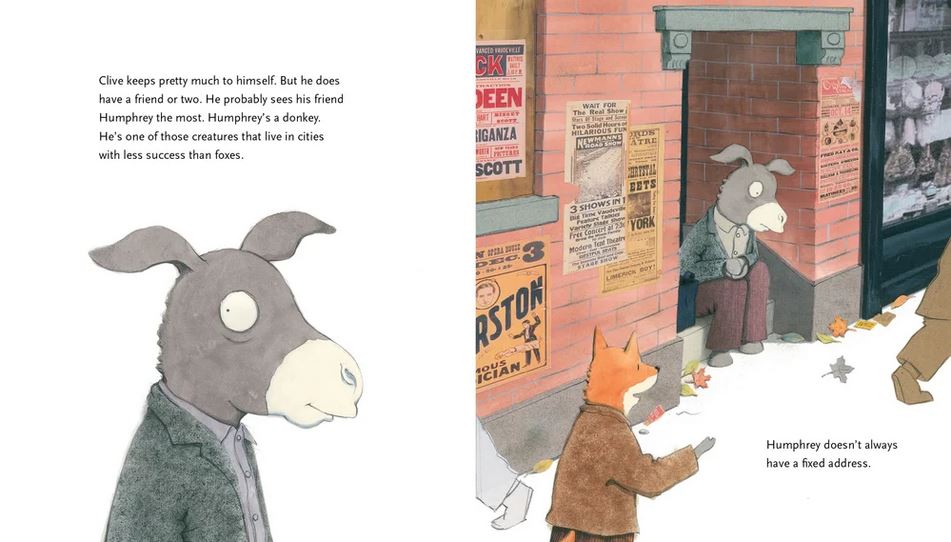
I’ve had friends who’ve struggled like Humphrey has, really big-hearted good people who still have struggles, and so I kind of know those characters. There’s a sympathy and a fondness for Humphrey that comes through. I always feel it’s a good sign when writing that you have this strong feeling come through, it can be humour or even a little lump in your throat. You realise it moves you, it touches on something inside you, and I think that’s probably a good sign because if you’re putting that much feeling into it then hopefully readers will get some feeling from it.
I always feel it’s a good sign when writing that you have this strong feeling come through, it can be humour or evena little lump in your throat.
M: Speaking of donkeys. Your book My Uncle’s Donkey was translated into Japanese by Haruki Murakami, of all people?
T: I didn’t realise what was happening until the book came out. I later found out that he had been in Australia – I think he was writing an article for Japan Airlines or something like that, not here for a writers’ festival – he was in Melbourne and he was meeting with people at the state library down there, and then he went to a bookshop and he bought a few books including My Uncle’s Donkey, so it must have caught his eye somehow. He decided he wanted to translate it for the Japanese edition, so when I got an offer came from a Japanese publisher via my agent and all they mentioned was that they had an enthusiastic translator on board. I later found that he was the enthusiastic translator.
And it’s come out in Japan and has his name on the cover as well. It’s such a random story, but I really like it because it’s not the way things usually happen in publishing. He’s circumvented all that by going, ‘I like this book I want to see it published in Japan so I’ll just go and make it happen’. He wouldn’t be thinking like a publisher, and so it came more from an artistic perspective than a market or strategic publishing perspective, which is a nice thing.
M: You’ve worked as an illustrator in the past – is there a writer you’d like to work with, or a project you’ve wanted to work on?
T: Probably not specifically – I think it’s more, are there ideas I want to work on, and that inevitably comes back to the things I’m into. If I’m reading a lot about something I might try and work out how I can do a book on what I’m interested in, so it does tend to come back to my own thoughts and ideas. Having said that, I worked closely with Ursula Dubosarsky on the Word Spy books and we’re good friends and I could imagine working with her very easily. I love her writing and the way she thinks, so if there were a writer I’d like to work with I’d happily work with Ursula. Otherwise, I have my own strange ideas that keep me pretty busy for the moment.
If I’m reading a lot about something I might try and work out how I can do a book on what I’m interested in, so it does tend to come back to my own thoughts and ideas.
M: As New Zealanders, we sometimes don’t pay enough attention to Australian artists. Are there authors/illustrators of picture books we should be looking out for?
T: Certainly if I look around there’s some good books being made, good quality, handsomely produced good-looking books.
The last book I’ve looked at in depth was Shaun Tan’s Cicada. He wrote a nice comment for the new edition of Nobody Owns the Moon and so I emailed him to thank him and we ended up swapping books, Cicada with Stinkbug. So Cicada arrived yesterday in the post and I just really studied it and read it with my fifteen-year-old daughter. In terms of books I’ve looked at in recent years that one has a level of enchantment to it and it’s got very real worlds that live on inside the book. I was really impressed with what he’d done there. I asked my daughter about it, what do you think it means and she had meanings that I hadn’t thought of and I had my own reading of it and then I realised you could read it all sorts of ways.
M: There’s a lot going on there.
T: One of the things I’ve realised making picture books is that they are really hard to make work really well. It’s like building a finely made machine, all the parts work and it purrs away. It strikes me is that he’s just got all the parts right and they’re all in the right place and the whole thing just hums along. That’s a sign of someone who’s really on top of his game.
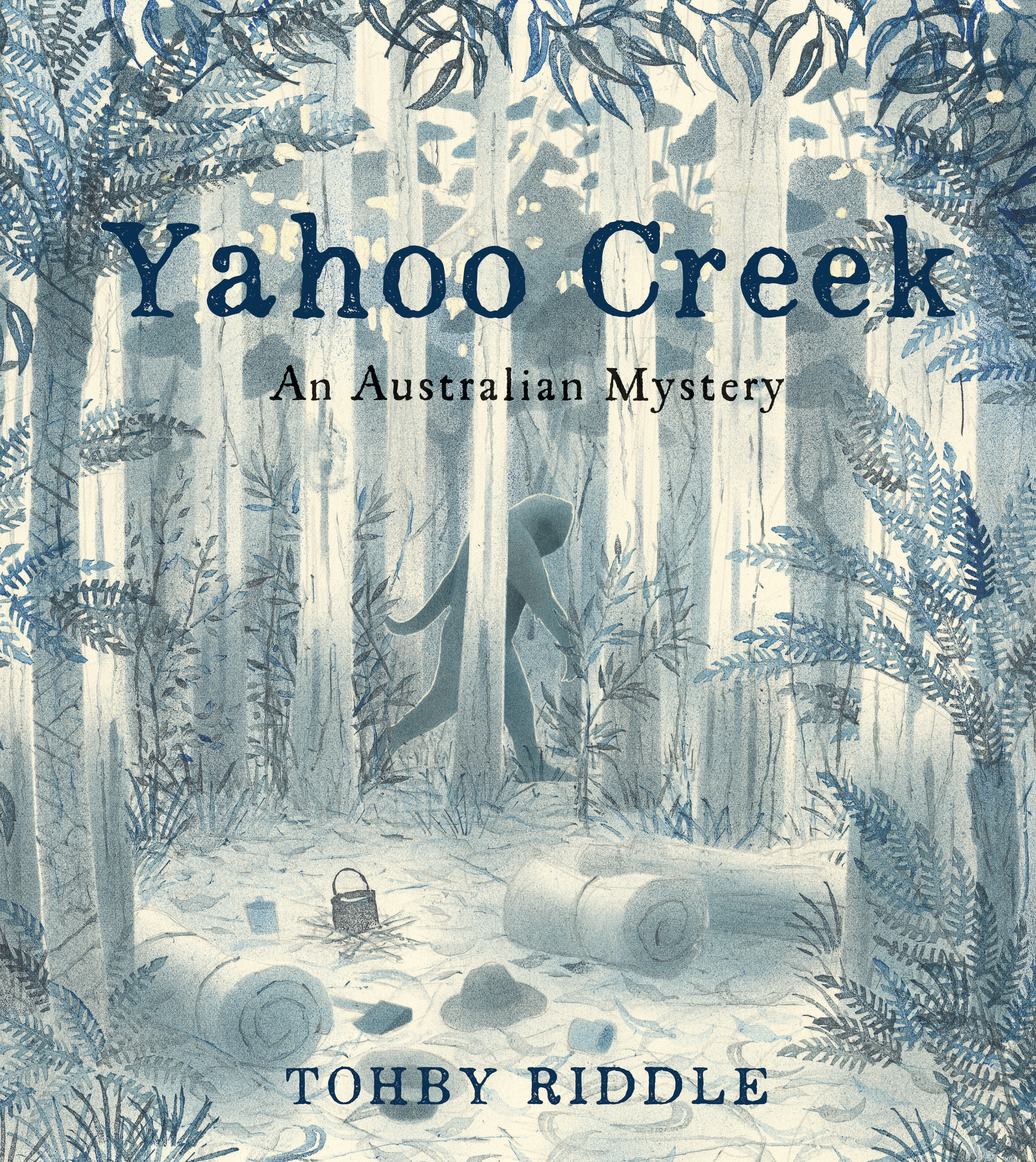
yahoo creek
By Tohby Riddle
Published by Allen & Unwin Children’s
RRP: $29.99
Buy Now
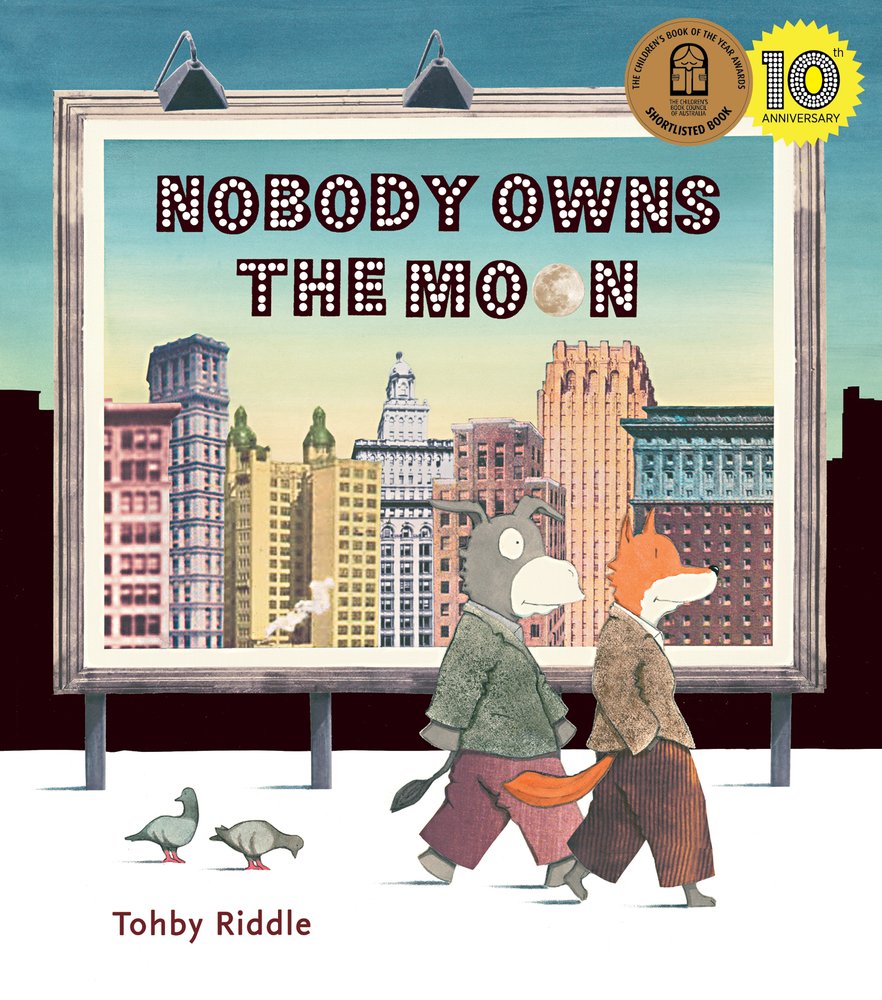
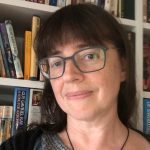
Miriam Hurst
Miriam Hurst is a medical specialist living in Auckland with five-year-old twins. She is currently updating her emergency supply kit.



